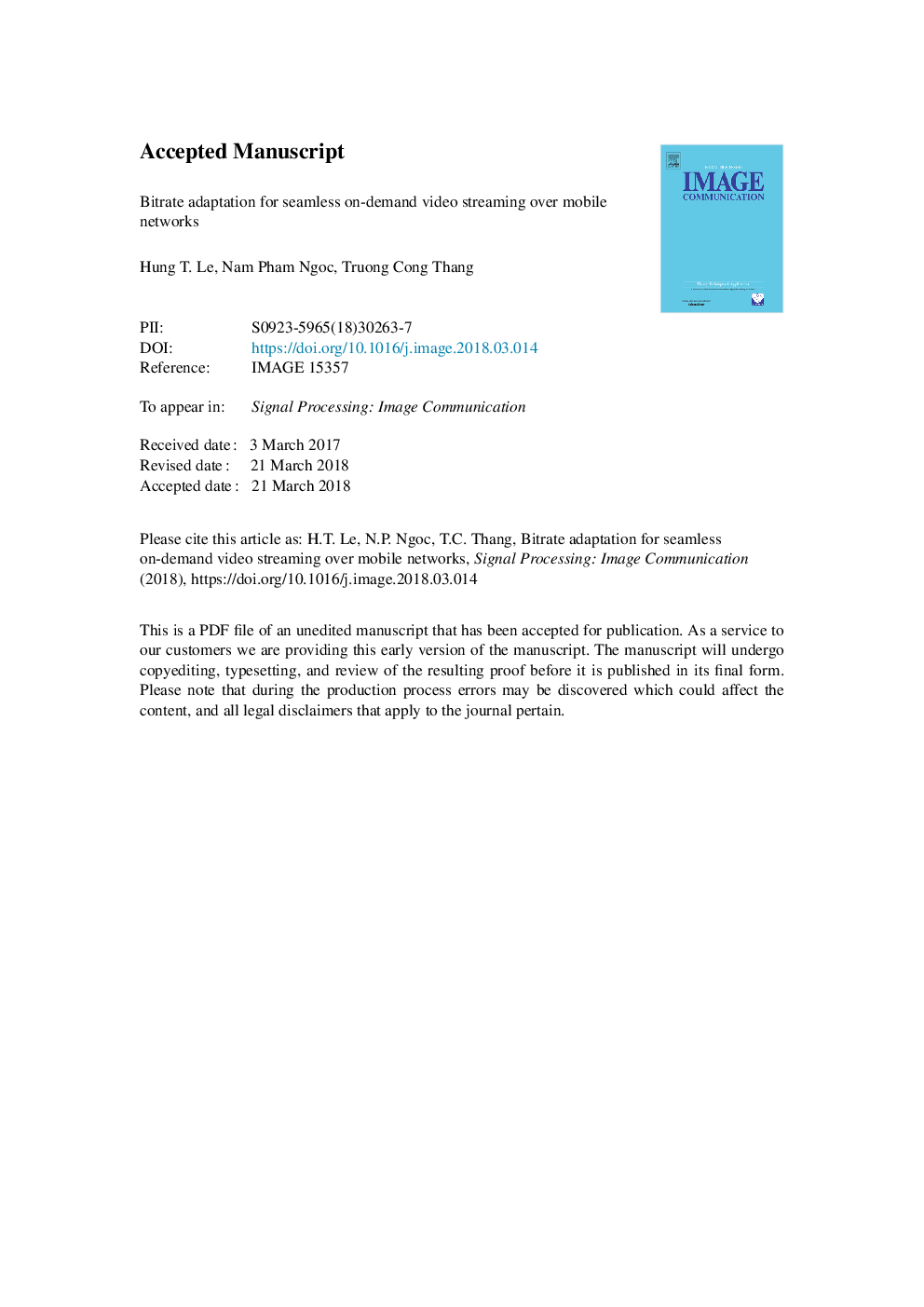| Article ID | Journal | Published Year | Pages | File Type |
|---|---|---|---|---|
| 6941521 | Signal Processing: Image Communication | 2018 | 38 Pages |
Abstract
HTTP Adaptive Streaming (HAS) has become a key technology for delivering videos over the mobile Internet. To cope with throughput variations during a streaming session, an HTTP streaming client should answer two key questions: (1) “should the current bitrate be maintained?” and (2) “if not, which new bitrate should be requested?” This paper presents a buffer-based adaptation method that systematically answers these two questions. By considering the trend of the buffer level in the near future, our method reasonably decides a buffer range for maintaining the bitrate. Moreover, when the bitrate should be reduced, the proposed method smartly selects the bitrate to yield smooth reductions while avoiding buffer underflows. Through evaluation with time-varying bandwidths of mobile networks, we show that the proposed method can provide high average bitrate, gradual transitions, and buffer stability.
Keywords
Related Topics
Physical Sciences and Engineering
Computer Science
Computer Vision and Pattern Recognition
Authors
Hung T. Le, Nam Pham Ngoc, Cong-Thang Truong,
